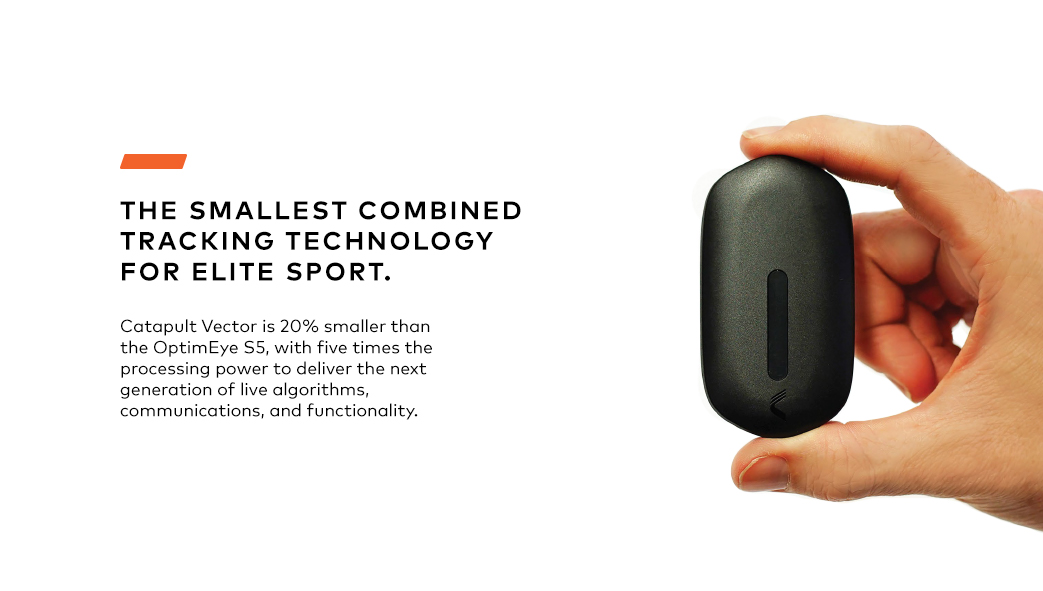How lacrosse teams’ interest in technology is growing and improving performance
Back in July 2021, Catapult announced a partnership with Premier League Lacrosse (PLL) to capture player-specific data and deliver optimizations related to athlete health, load management, and practice regiments. At the time of the announcement, PLL Co-Founder Paul Rabil, said:
“We’ve seen Catapult’s impact on the world’s top-performing athletes, and their state of the art technology offers us the tools to better understand performance trends, strengths, and weaknesses, all to help us perform at our highest level.”
As the partnership progressed, Catapult and the PLL identified that lacrosse players covered 20% more ground and recorded a 20% increase in distance per high-speed effort during games they won. Additionally, long stick midfielders logged 2.5 times more acceleration efforts and distance, with midfielders recording a 36% increase in high-intensity change of direction efforts during wins.
→ Click here to learn more about Catapult’s application in Lacrosse.
This insight has led to a growing interest in and adoption of technology, like Catapult Vector, across various levels of lacrosse. One team harnessing such technology is six-time NCAA National Champions, the Princeton Tigers men’s lacrosse team.
“Here at Princeton, we want to perform at the highest level and so, provide our athletes with the best resources to compete with anyone in the country. Catapult is a foundational piece in making this happen,” said the Tiger’s Assistant Strength and Conditioning Coach, Mark Ellis.

Why was the Tigers’ interest in Catapult?
Ellis spearheads the use of technology within the NCAA Division 1 program and he was interested in the technology after seeing its ease of use and receiving recommendations from others in the industry.
“Our program decided to select Catapult because of its user-friendly dashboard as well as the great access to sports scientists … Another reason behind our decisions was the numerous recommendations by other colleagues in the sports performance world and the tons of research/evidence behind the technology,” said Ellis.
But what peaked the assistant strength and conditioning coach’s interest was the technology’s ability to improve performance and provide further chances of winning future national championships.
“Catapult has provided me and our coaching staff with daily data that allows us to construct practice effectively; as well as connecting what our athletes do on the field with what they do in the weight room. A prime example of this is having the ability to break the data prior to a lifting session and have the freedom to adjust the program based on what type of day (Player Load – Intensity) they had previously,” said Ellis.
“Catapult simply puts us ahead of the curve in making performance decisions easier with evidence to support.”

→ Click here to arrange a demo of Catapult Vector.
How to improve performance with technology
Having used Catapult Vector for some time, the program has experienced many benefits. So Ellis shared various on- and off-field use cases for teams looking to adopt wearable technology.
Use case #1 Optimizing performance
“Our lacrosse program here at Princeton is focused on speed and explosiveness, and so, my day to day with Catapult involves me checking numerous metrics – high-speed distance, explosive efforts, and max velocity,” said Ellis.
Measuring these metrics enables the program to “practice how they play” and ensure that players are practising at the desired level.
“In addition to the speed and explosive metrics, Player Load is very important to us to ensure we are training at an optimal level every time we step on the field.”
Use case #2 Creating a competitive culture
“My student-athletes here at Princeton are super engaged with the technology. Every day the athletes receive a PDF of the previous day of practice and they get to see how they perform as well as their teammates,” said Ellis.
Sharing the Catapult derived data in this way enables Ellis and the student-athletes to celebrate the success and the milestones reached by each athlete in the team.
“The best part about sharing the information with our athletes is every time someone hits a new max velocity throughout the year, we celebrate it,” explained Ellis.
As a result, the Tigers have “created an atmosphere of where we want to not only compete with the competition but within our team by pushing each other to that next level. Speed is what we want, what we coach, and what we emphasize every day.”
Use case #3 Keeping bench players primed to start
“It’s been important for us to ensure every athlete is being trained optimally as if there were going to be a starter. Athletes are in and out of the lineup so our ‘next man’ mentally really holds true,” said Ellis.
Monitoring the data and performance level of starters, Ellis can determine the level each student-athlete in the program needs to be at in order to be ready to compete.
“Understanding starters may have more on their plate, non-starters do a great job of maintaining positional Player Load averages through what here at Princeton we call ‘extras’ … for example, shooting prior or after practice, the extra work ensures when your number is called, we are all physically and mentally prepared for any starting opportunity,” said Ellis.
After outlining the above use cases, Ellis shared his view on how he can leverage Catapult’s solutions for many years to come.
“This is only the start for us and we’re super excited about working with Catapult moving forward. Based on the data this year, we can use it as a baseline for our future seasons. Given the long summer break, we can effectively progress our athletes back to the levels we want and need to be at, but this time with data and evidence.”
→ Interested in finding out how Catapult can help your lacrosse team find its competitive edge? Get in touch, today.